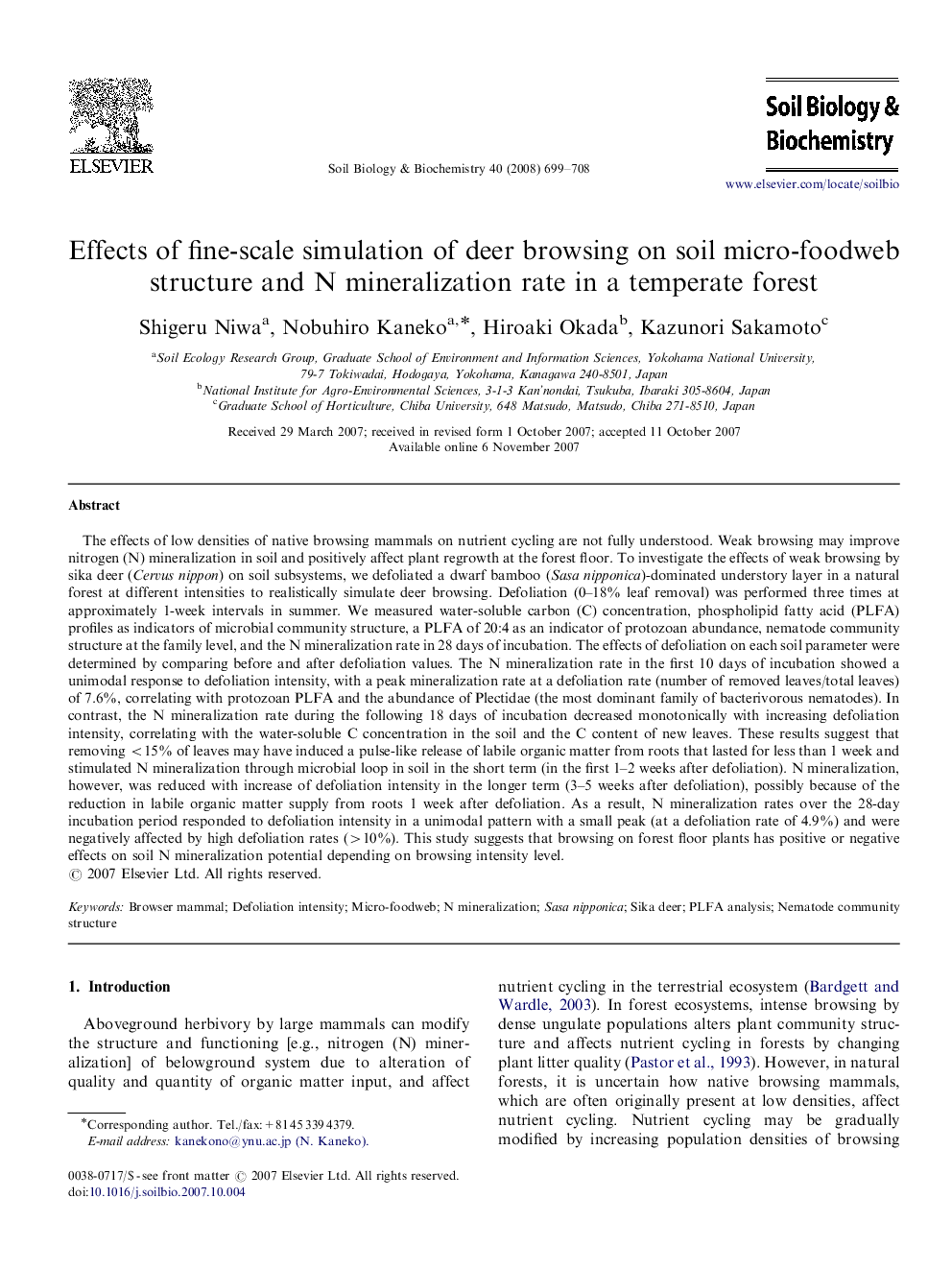| کد مقاله | کد نشریه | سال انتشار | مقاله انگلیسی | نسخه تمام متن |
|---|---|---|---|---|
| 2026996 | 1070070 | 2008 | 10 صفحه PDF | دانلود رایگان |

The effects of low densities of native browsing mammals on nutrient cycling are not fully understood. Weak browsing may improve nitrogen (N) mineralization in soil and positively affect plant regrowth at the forest floor. To investigate the effects of weak browsing by sika deer (Cervus nippon) on soil subsystems, we defoliated a dwarf bamboo (Sasa nipponica)-dominated understory layer in a natural forest at different intensities to realistically simulate deer browsing. Defoliation (0–18% leaf removal) was performed three times at approximately 1-week intervals in summer. We measured water-soluble carbon (C) concentration, phospholipid fatty acid (PLFA) profiles as indicators of microbial community structure, a PLFA of 20:4 as an indicator of protozoan abundance, nematode community structure at the family level, and the N mineralization rate in 28 days of incubation. The effects of defoliation on each soil parameter were determined by comparing before and after defoliation values. The N mineralization rate in the first 10 days of incubation showed a unimodal response to defoliation intensity, with a peak mineralization rate at a defoliation rate (number of removed leaves/total leaves) of 7.6%, correlating with protozoan PLFA and the abundance of Plectidae (the most dominant family of bacterivorous nematodes). In contrast, the N mineralization rate during the following 18 days of incubation decreased monotonically with increasing defoliation intensity, correlating with the water-soluble C concentration in the soil and the C content of new leaves. These results suggest that removing <15% of leaves may have induced a pulse-like release of labile organic matter from roots that lasted for less than 1 week and stimulated N mineralization through microbial loop in soil in the short term (in the first 1–2 weeks after defoliation). N mineralization, however, was reduced with increase of defoliation intensity in the longer term (3–5 weeks after defoliation), possibly because of the reduction in labile organic matter supply from roots 1 week after defoliation. As a result, N mineralization rates over the 28-day incubation period responded to defoliation intensity in a unimodal pattern with a small peak (at a defoliation rate of 4.9%) and were negatively affected by high defoliation rates (>10%). This study suggests that browsing on forest floor plants has positive or negative effects on soil N mineralization potential depending on browsing intensity level.
Journal: Soil Biology and Biochemistry - Volume 40, Issue 3, March 2008, Pages 699–708